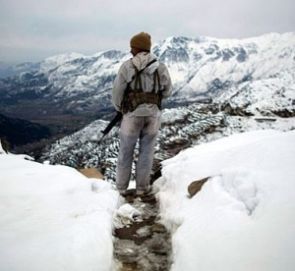 | « Back to article | Print this article |
 Continued uncertainty or confrontation in the Asia-Pacific is clearly in no one’s interest as it will affect major powers’ attempts to restructure their economies and revive growth. Conflict would roll back the gains to each of our countries of 40 years of stability and peace, says Shivshankar Menon.
Continued uncertainty or confrontation in the Asia-Pacific is clearly in no one’s interest as it will affect major powers’ attempts to restructure their economies and revive growth. Conflict would roll back the gains to each of our countries of 40 years of stability and peace, says Shivshankar Menon.
From an Indian point of view, located as we are at the intersection of West Asia and what is now called the Asia-Pacific, until recently Asia appeared to be heading in different directions, depending on whether one looked east or west. But today, in 2014, whichever way one looks, the factors of uncertainty have increased manifold, as has a sense of insecurity.
The reasons why this is so to our west are well known. The turmoil in West Asia has been well analysed, perhaps over-analysed; we know of the multiple transitions in Afghanistan this year, of the situation in Syria, Iraq, Libya, and so on and so forth.
But it is less obvious why there should be increased instability to our east in the Asia-Pacific, why East Asia is much less harmonious than it was until a few years ago.
One reason could be that the Asia-Pacific is a crowded geopolitical space, with the active involvement in its affairs of several established and of rising or re-emerging powers, some external and some intrinsic to the region. But it has been so since the beginning of the nineteenth century. So what has changed to increase insecurity and uncertainty? I can think of four immediate reasons:
Each of these phenomena individually might not have been a cause for worry. Even taken together they could have been manageable. But they come at a time of doubt about the security architecture in the Asia-Pacific and just when a new balance of power is emerging.
For 40 years, since the US opening to China and the Vietnam War, the Asia-Pacific has known relative stability under a security order in which the US provided security guarantees for the status quo. Today the US itself is rebalancing back to the region and there is heightened uncertainty in the region.
What should we do?
Continued uncertainty or confrontation in the Asia-Pacific is clearly in no one’s interest as it will affect major powers’ attempts to restructure their economies and revive growth. Conflict would roll back the gains to each of our countries of 40 years of stability and peace.
What is the answer?
Clearly we need to act upon repeated statements by all the countries in the region and build an open, inclusive security architecture in the region, adding content to the concept and implementing it as soon as possible. We are only at the inception of this process with the ARF, the ASEAN Defence Ministers’ Plus dialogue, and the East Asia Summit.
It will, of course, be a security architecture with Asian characteristics, the political-military equivalent of the open interlinked economic order that has so benefitted the region, taking into account the primarily maritime nature of many regional security issues and disputes amenable to collective solutions.
In building the order we should concentrate on the security essentials that made the region’s phenomenal economic growth possible. The commons, on the high seas, in air space, and in cyber space should be safe and open to all lawful civilian users. That is why maritime security and freedom of navigation is so important and should be one of the first orders of business.
Openness about doctrines and defence, and increased military contacts, would also take some of the edge off uncertainty although confidence building can only hold the ring until the hard work of solving disputes and agreeing a rule based legal order is done.
All should work to ensure the peace and security that is so essential to Asia’s common future.
Shivshankar Menon is India’s National Security Advisor. He made this speech at the Asian Security Conference organised by the Institute for Defence Studies and Analyses.
Courtesy: IDSA